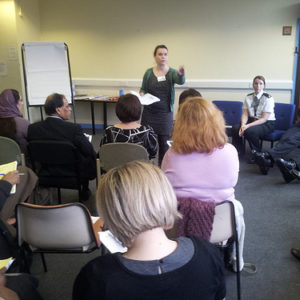The clamour of shows, product releases, conferences and exhibitions makes it hard for people to notice your corporate event. That’s true, even of your target audience.
Good publicity can be the difference between success and failure. Luckily we have is a simple step-by-step process to ensure your event is a success.
STEP 1: PREPARATION
Designate a publicity officer
Organising a corporate event is hard enough without also having to create effective publicity. A team of workers is necessary for a successful event, with one team member acting as publicity officer. The publicity officer should be able to absorb facts quickly and communicate a clear, concise message to your target audience.
First off, you need to research what will attract your target audience. The more feedback that you gather, the more you can generate publicity that will entice your target audience. As ever with market research, try and avoid asking leading questions. Respondents often give you the answers that they think you want to hear. With this research, you can shape your marketing material to match your target audience. For instance, if your event is for well-informed participants, then include specific technical information in your marketing material. However, if you were looking to entice the general public, tone down the professional jargon.
Prepare your marketing material text
The marketing material for a corporate event often involves plenty of repetition with the same basic information tweaked slightly over and over again. For this reason, it is useful to prepare short text that consists of the following (in order):
- An eye-catching headline
- An interesting and concise description of the event
- Key information such as the venue, date, time and your contact details
- Supplementary information
You can adapt this standard text to fit the various promotional materials, such as invitations, newsletters and posters. Remember, all promotional material needs good, clear writing and editing.
List your media and industry contacts
Draw up a comprehensive media list beforehand. This means that the right people in the right media outlets are aware of your event. Other possible contacts include press officers in other companies, trade journals, local and national press and so forth.
Identify who is most likely to cover the event. It could be the science editor, news editor, or business editor. Make sure your contacts list is up to date.
STEP 2: GETTING YOUR MESSAGE ACROSS
Tailor promotion to your target audience
It is important to select the promotional method that will best capture the interest of your target audience. A scattergun publicity campaign is a drain on your resources and finances. The research you conducted on your target audience ought to be of help in deciding which, if any, of the following examples of promotional methods are suitable.
One of the cheapest method of promoting your event is to network with personal and professional contacts, and special interest groups and associations. Creating a buzz about your event in the right circles, can involve just a few phone calls. Interested parties will often be happy to promote the event in their own publicity material.
Personalised invitations be effective if the target audience is small and easily definable. These also work if there is a select group of influential individuals (e. g. media, political or business figures) whose attendance will boost the profile of the event.
If your target audience is easily identified, you can use direct mailshots. Using individual contact names, if possible, will increase the effectiveness of a mailshot considerably. Do not overload your recipients with information by including thick information packs, unless a recipient specifically requests this.
Social media
Social media and email marketing is an affordable method of promoting an event. You can use an email marketing service, such as MailChimp, to send promotional emails to your contact list.
You can also set up the event on your social media channels such as Facebook. This is a great way of monitoring anticipated attendance. However, as you are probably aware, the numbers of people who say they are attending is often higher than those who show up. To ameliorate this, you can include links to register for the event. You can also incentivise people to register by offering them a free gift or goodie bag at the event.
You can build interest using your social media channels such as Twitter, Facebook, LinkedIn, and so forth. Social media can help you to identify the people and organisations most likely to be interested in your event. However, remember that the best social media relationships are reciprocal. Don’t expect people or organisations to follow you and share your event if you are not willing to do the same for them.
If you are seeking to attract the general public, don’t forget to include the event on free listings websites.
Advertising
Eye-catching and well designed flyers, posters and posters can prove very effective. This is especially true if your target audience is the general public. You need to consider areas, such as public buildings, that your target audience is likely to attend on a regular basis.
Advertising is a sure way to guarantee exposure for an event. However, you need to be aware which kinds of media your target audience uses. That means the newspapers, magazines, websites, radio stations and so forth.
In addition, you should consider the media outlet’s reach. That is the overall audience figures and of course, the cost of the advertisement.
The publicity officer should check whether the media outlet will put together an item (e. g. article, interview) about the event that is being advertised, as this is often possible.
Writing a Press Release
Press releases are key to grabbing the attention of journalists who, if they cover it, will increase your event’s exposure. The following are a few helpful tips when composing your press release.
The headline is the most important element of a press release. It needs to be eye-catching, drawing in the reader’s interest. Keep the headline short and punchy. Use a subheading to expand on your point.
The body of a press release should adhere to the inverted pyramid structure. That is, with the most important questions – the what, why, who, where, when and how – addressed in the initial paragraphs.
The language in a press release should consist of short, concise sentences. Copywriters should avoid overly creative and flowery language, clichés, and unnecessary superlatives and exaggeration. The aim should be to convey the facts in a straightforward and easily understood style.
Avoid overly technical jargon unless you are sending the press release to a specialist journalist such as a business or science editor.
Use quotes to convey opinions and remember to include evidence to back up any claims.
Keep the press release brief (about 400 to 600 words). Journalists are often pressed for time and will briefly scan a release in search of an interesting story.
Furthermore, it is essential that contact details and a brief description of your company are also included at the end of the press release.
Follow up with journalists and media contacts
The publicity officer needs to ensure that press releases are distributed well in advance of the event. Therefore, interested journalists will have plenty of time to run a news story, seek an interview or compose a feature length article.
It may prove useful to contact the media outlet or two or three days after the press release is sent. You can ask if the press release was received, check whether the journalist is interested in covering the event, and provide any additional information or assistance that is required.
Finally, you don’t have to confine yourself to one press release for all media contacts. Different versions can be tempered according to which aspect of an event will interest each type of journalist the most.












Comments